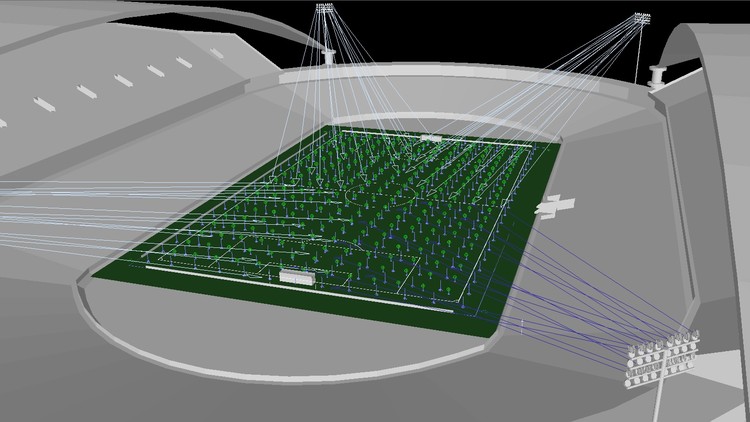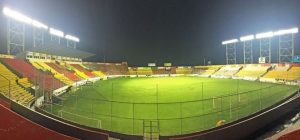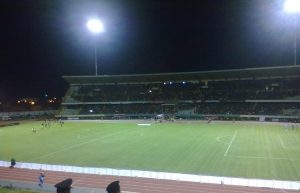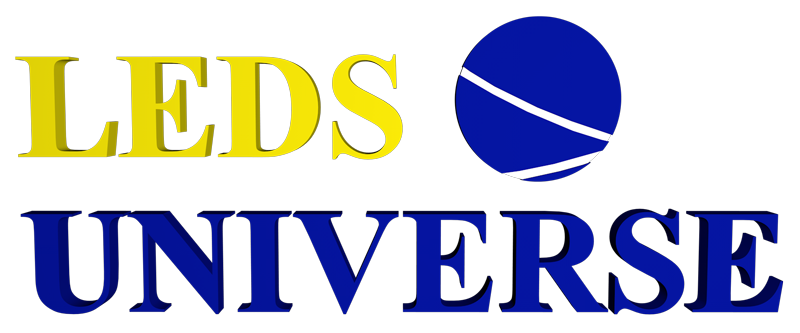What is vertical and horizontal lighting in sports?
A. Project Vertical Illuminance Definition and Calculation
Illuminance is the measure of how much light illuminates a surface. In other words, vertical illuminance can be defined as the measure of light perception by camera and our eyes when reflected off a surface. It is measured in the unit “lux” and mostly used for televised games and events.
Our focus here is going to be illuminance in sports. Typically, there are two kinds of measurements that are used in sports:
1.Horizontal Illuminance Definition
This is measured on a horizontally positioned hypothetical surface a meter above the surface of the field. There are multiple calculations taken on a grid.
2.Vertical Illuminance Definition
Vertical Illuminance is measured on a vertically positioned hypothetical surface. The difference between vertical and horizontal luminance is that we have to specify both the position and orientation of the surface. In addition, verticality can have different directions, including vertical to camera and to audience.

B. Calculation and Illuminance with LED sports lights
All sports have a principal main playing area as well as the total area. The total area includes the playing area and the safety area. In sports, lighting is measured in terms of minimum horizontal illuminance (on a hypothetical surface as mentioned earlier) and the uniformity of illuminance. Luminance is important in sports because it is the illuminated plane that needs to be properly visible to spectators, TV viewers, camera, and so on. Vertical illuminance is something to considered on broadcasting matches. Because of the large size of some sports arenas and playing fields, efficient lighting systems are essential.
C. Vertical and Horizontal Light Measurement Details, and How They Affect Project Cost?
 Vertical lighting is usually only required on very high-profile stadium lighting installations: with this we mean top league standards that have weekly TV broadcasting in HD or 4k cameras. Most of the times, even professional sports, in lower leagues do not use vertical lighting because their games are not broadcasted or televised in a regular basis.
Vertical lighting is usually only required on very high-profile stadium lighting installations: with this we mean top league standards that have weekly TV broadcasting in HD or 4k cameras. Most of the times, even professional sports, in lower leagues do not use vertical lighting because their games are not broadcasted or televised in a regular basis.
Vertical lighting is a trade-off: lighting gets adjusted to camera broadcasting, but this comes at an additional cost. A project with vertical lighting implies, on average, an additional project cost of around 70%, being more expensive than a standard single horizontal illuminance configuration.
This takes place because more energy and power are spread in different orientations that are more attractive to the camera requirements. Therefore, you will need to buy almost twice as much lights in a vertical lighting scenario than in a horizontal scenario. So, unless your project is in a top league, you should disregard vertical lighting in order to remain competitive in the project bidding.
Usually, stadiums with average lux levels of below 1000 lux, do not demand vertical lighting. Starting at 1200 lux, some top league stadiums might be looking for it.
High Mast lights for FIFA and UEFA stadiums
D. Calculating vertical illuminance with LED sports lights
Luminance is measured in SI units in lux (lx). This can also be termed as lumens per square meter. That is, the amount and intensity of light per given area. Ev is the common symbol used to define luminance. In sports, vertical illuminance plays an important part because of the viewership and judgement requirements. In sports like football, basketball and other sports, we have to consider this while using lighting systems. This is because the goalposts, the basket are positioned vertically. We measure vertical illuminance the following way:
This Vertical Illuminance and Horizontal Light Measurement can be withdrawn and calculated via lighting software, such as DIALux. Ev (Illuminance) = (1/d2)* sin y (gamma). This is the most standard equation. Here is the angle between the lighting system and the vertically illuminated surface.
This is valuable to keep in mind when taking Vertical and Horizontal Light Measurement for using lighting systems or positioning in sports. Photometry has to be put to use to avoid improper viewing angles, or visibility of the surface, and it’s here that vertical illuminance definition and calculation plays a role.
E. Consulting a lighting specialist
 If you’re looking for new lighting or orientation for the Vertical and Horizontal Light Measurement, it is best to consult a lighting specialist. LedsUniverse has their own R&D team that can assist in consultation about this. Vertical illuminance is something that is coupled with LED sports lights on more advance projects. So, it is essential to keep in mind the lighting system, the vertical area and the luminance required.
If you’re looking for new lighting or orientation for the Vertical and Horizontal Light Measurement, it is best to consult a lighting specialist. LedsUniverse has their own R&D team that can assist in consultation about this. Vertical illuminance is something that is coupled with LED sports lights on more advance projects. So, it is essential to keep in mind the lighting system, the vertical area and the luminance required.
Using lighting systems by LedsUniverse can give you a wide range of possibilities to ensure the best viewing angles and get less involved with the background noise. LED systems are readily available and can be rolled out after consultation with experts.
